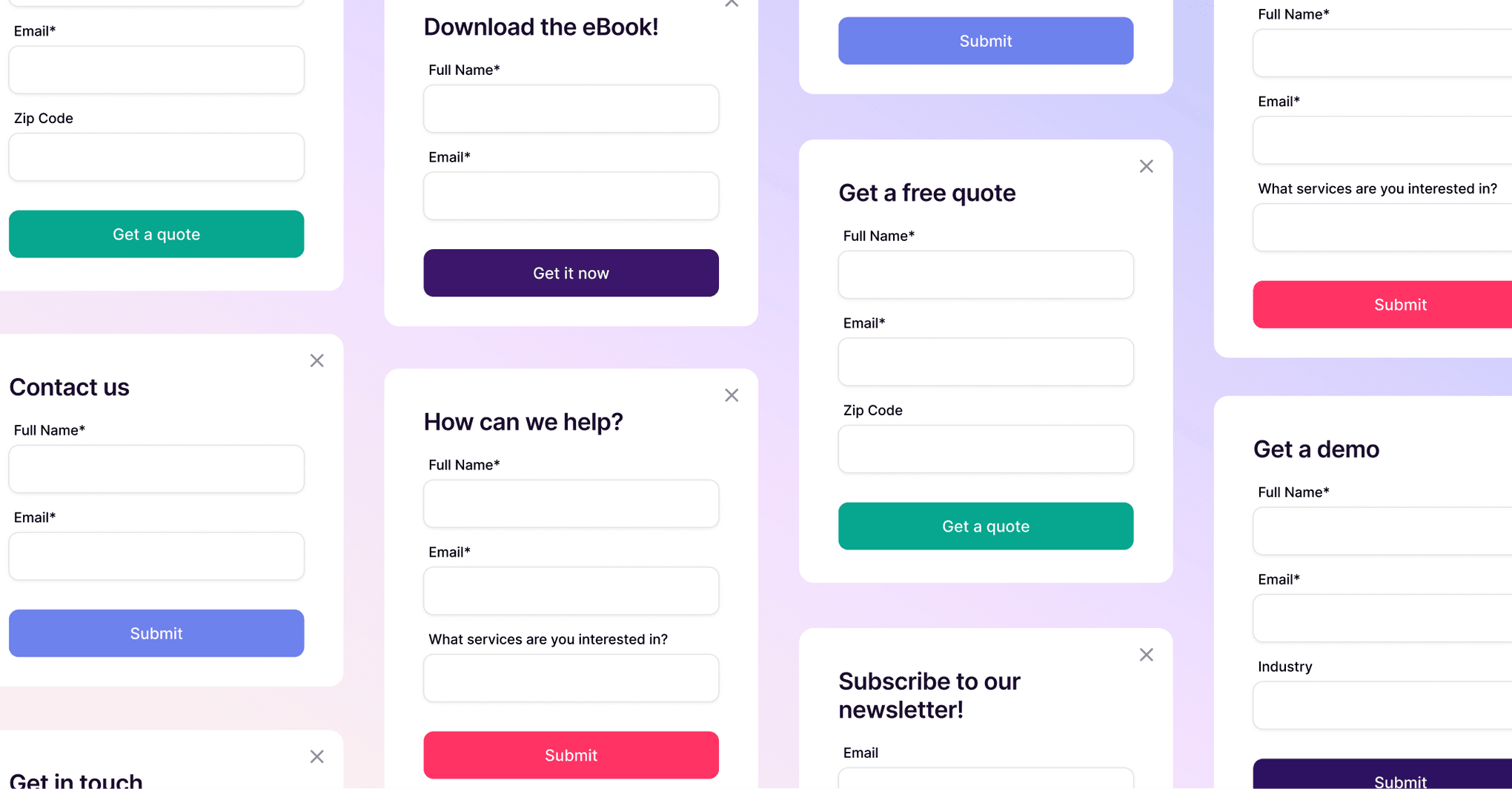Jemicah Marasigan
Content Marketing Manager
Your agency has eight, maybe 10 employees. And you’re probably proud of your small, scrappy team with big talent and even bigger potential. You’re landing solid clients. You’ve got good momentum.
But here’s the real question: How do you level up from a tight-knit team doing everything manually… to an agency that scales with structure?
Because if you’re still the one rewriting decks, hopping on last-minute client calls, untangling timelines, and fixing deliverables at the last minute.… you’re not leading. You’re surviving.
And survival mode doesn’t scale.
Somewhere between big vision and group chat emergencies, that little voice creeps in — cool, confident, and completely unhelpful: “I’ll just do it myself.”
We’ve all said it. But gripping every task like the agency will fall apart without you? That’s not sustainable. It’s a one-way ticket to burnout.
This business won’t grow because of your fingerprints on every file. It grows when you start building systems, handing off tasks, and leading like a CEO — and not as a catch-all safety net.
If you’re wondering whether it’s time to outsource or delegate more, then you probably already know the answer. You just haven’t said it out loud yet.
If you keep telling yourself “My team should just know what I want,” it’s time to reassess
You’ve probably thought about it — or said it in a moment of frustration: “Why don’t they just know how I want this done?”
Here’s why: your team isn’t you.
They might be talented, experienced, and invested, but they’re not mind readers. And if you haven’t clearly documented expectations, preferences, or what “done” actually looks like… you’re going to keep getting half-finished drafts and Slack messages like “is this okay?”
What looks like a lack of initiative is usually just a lack of clarity.
If you’ve got a growing team but your calendar still screams “team of two,” that’s your sign. You’re not just busy. You’re bottlenecked.
So why are you still bouncing between strategy calls and Canva tweaks at 11pm?
Usually, it’s because of one sneaky lie we all tell ourselves: I still need to be involved in everything. Especially when you’ve built your agency from scratch, staying hands-on feels like second nature. But doing it all isn’t a badge of honour — it’s the fastest way to stall your growth.
This lie shows up in all kinds of ways: “I have the vision” or “it’ll just take me five minutes.”
But those five-minute tasks add up — and suddenly your day is a blur of approvals, rewrites, and notifications instead of strategy and scale.
If your presence is required for every micro-decision, you’re not running a business. You’re babysitting one.
Letting go is hard. We get it. There’s comfort in control. There’s comfort in that satisfying click when you tick off a task, the quiet thrill of seeing something done your way. But here’s the truth: control does not scale.
If you're serious about leveling up, start with this: Get honest about what only you can do — and what someone else could probably do 80% as well.
If you’re telling yourself “I just need to push through this busy season,” here are 3 signs it’s time to outsource
If your calendar is stacked, your to-do list never ends, and your brain feels like it has too many tabs open — that’s not just a rough week. That’s a sign.
You don’t have to white-knuckle your way through every growth spurt. At some point, “just pushing through” turns into slowing everything down. That’s when it’s time to stop asking if you should outsource, and start asking what you need to let go of.
So how do you know when you’re there?
Here are three signs your agency is ready to outsource:
1. You're stuck in the weeds instead of steering the ship
If you’re constantly working late just to catch up on admin tasks — like replying to emails, tracking invoices, or managing approvals — you’re not leading. You’re just treading water. Your best energy is being spent on maintenance, not momentum.
2. Your team is always waiting on you
When every project stalls until you weigh in, it’s a problem. If your name is on every approval, every Slack thread, every file—guess what? You’ve become the bottleneck. And that slows everyone down, including your growth.
3. You’re too busy to pursue new opportunities
That “we’ll follow up later” tab you keep open? It’s costing you. If you're constantly pushing back pitches, pausing big ideas, or skipping strategy time because you’re too swamped with day-to-day tasks, you’re leaving money—and momentum—on the table.
How to outsource the right way (without creating chaos)
So you’ve admitted it: you can’t do everything yourself. (Progress!) But now you’re facing the next big question: How do you actually start outsourcing without everything falling apart?
This is the part where most agency owners get stuck. You know you’re overloaded — but the idea of bringing someone else in feels risky. Not because the work can’t be done, but because there’s no system in place to hand it off cleanly.
If you’re serious about taking your agency to the next level, outsourcing isn’t just a nice-to-have — it’s a necessary move. The key is doing it strategically, using a framework that sets you (and your team) up for success.
Here’s where to begin:
Step 1: Track what you’re actually doing each week
Seriously, keep a running list. You'll spot patterns fast. For example, if you’re answering the same client questions over and over, that’s a task begging for a template or a handoff.
Step 2: Bucket your tasks into three zones
Zone 1: Only I can do this — think strategy, creative direction, relationship-building.
Zone 2: I could teach this once — client onboarding, standard reports, recurring SOPs.
Zone 3: Someone else should be doing this yesterday — inbox triage, social scheduling, chasing invoices.
Step 3: Start handing off Zone 2 and 3
Not all at once. Not overnight. But enough that your role starts to shift from doer of all things to leader with breathing room.
Start with the tasks that are draining your time but don’t actually need your expertise. Then ask yourself: Who’s the right fit for this?
Internally, look for people already touching similar work. Who’s already handling pieces of this task? Who’s shown interest or potential? Give them ownership — not just another to-do.
Externally, consider where specialists could step in. That might mean hiring a freelance designer, a fractional COO, or a VA to handle inbox triage. Start small and scale up once trust is built.
And don’t forget the structure.
Systems are what make outsourcing sustainable. That means clear documentation, tools for visibility, and processes that reduce the back-and-forth.
Get the latest from our blog every month
If you’re telling yourself “I’ll figure it out later,” set up your systems now
You know you need better systems. You’ve even said things like, “I just need to get through this launch,” or “I’ll set that up after next quarter.”
But here’s the thing: later always shows up when you’re least ready for it.
Procrastinating your system setup is like waiting for it to rain before you buy a roof. By the time things are leaking, you’re already in damage control mode.
Systems aren’t a luxury, they’re a survival tool. They buy back your time, protect your brainpower, and give your team (and future contractors) something solid to build on.
If things feel messy now, that’s the best time to start. Not after.
And no — you don’t need a six-figure ops budget or a 40-tab project board. You just need a simple, repeatable system to help you track tasks, delegate clearly, and start outsourcing without chaos.
It doesn’t have to be fancy. It just has to work.
And with tools like Copper, it does. So, start by using the same framework:
1. Get set up with a client and project management platform
One of the first places you can start is with a client and project management platform that helps you see the whole picture, without needing a dozen different tools to do it.
A system like Copper brings your client communication, deal stages, project timelines, and team You can track leads, assign tasks, manage deliverables, and keep every conversation organized — whether it’s with your internal team or outsourced support.
No more digging through Slack threads or piecing together updates from five platforms. With Copper, everything’s visible, searchable, and actually manageable. You can set task owners, automate follow-ups, manage project phases, and see exactly how work is progressing in real time.
That means fewer status meetings — and way more actual doing. You’re not chasing updates. You’re watching momentum build.
And the best part? Even if you’re outsourcing, you’ll always have a clear view of who’s doing what, and where everything stands.
2. SOPs are your underrated lifeline
You’ll also need SOPs, short for Standard Operating Procedures. Think of them as detailed how-to guides for your recurring tasks. Whether it’s how to onboard a new client, draft a proposal, or close out a project, an SOP walks someone through the steps so they can do it right — without bugging you every five minutes.
We know, it sounds like busywork. But let us rebrand it for you: SOPs are freedom documents. A simple, well-written doc or Loom video can save hours of hand-holding. They allow someone else to take work off your plate while you focus on what actually grows the business.
Even better? SOPs make onboarding new team members, freelancers, or VAs exponentially faster. Your future self (and your sleep schedule) will thank you.
3. Automations and templates are your silent MVPs
If you’re doing something more than three times, it’s begging to be templated. Things like client check-ins, project timelines, or follow-up emails shouldn’t be getting rewritten from scratch every week. Create it once—reuse it often. That’s time (and brainpower) saved.
Then there’s automation. And no, it’s not just for the enterprise giants. Even small agencies can benefit from simple workflows like recurring tasks, stage-based email nudges, or auto-reminders that keep projects moving forward — without you manually pushing them.
These tools don’t exist to replace your judgment. They exist to protect it. To free up your mental bandwidth, especially when your business is growing fast and the moving parts start multiplying.
Let’s talk about the real ROI of outsourcing
Time is the obvious win. But outsourcing does more than clear your calendar. It gives you room to think, room to lead, and room to grow. Instead of reacting all day, you start to act on your vision. You spot trends. You win more business. You make sharper decisions because your brain isn't jammed with a hundred tabs.
It’s also good for your team. When you're less scattered, they get faster approvals, clearer direction, and more space to shine. Retention improves. Morale climbs. Your agency’s vibe shifts from “frenzied” to “focused.”
If you’re telling yourself “Outsourcing will lower our standards,” you need to hire the right people
This one stings a little, doesn’t it?
We tell ourselves that quality will drop the second someone outside the core team gets involved. But here’s the truth: your team is already juggling a lot. Sometimes, their focus needs to stay on what they do best — not on one-off design projects, backend cleanups, or chasing invoices.
Outsourcing doesn’t lower your standards. It protects them.
By bringing in the right people for the right tasks — and giving them clear systems — you can actually raise the bar. Whether it’s a contractor, freelancer, or someone on your team stepping into a new role, the right support can deliver better (and faster) than you or your already stretched crew.
Worried about trust? You trusted your gut when you built your team. You spotted talent, bet on potential, and created the machine you have now. Trust that same instinct when it’s time to delegate — whether you’re offloading work internally or bringing in external help.
With clear onboarding, documented processes, and tools that keep everyone aligned (like Copper), outsourcing becomes a growth lever — not a gamble.
(And yes, that onboarding process? You can even track it all with a dedicated onboarding pipeline in Copper. Hint hint.)
You don’t have to make a huge investment on day one. Start small. Consider hiring a VA for inbox chaos, a freelance designer for a pitch, or a consultant to streamline ops.
With tools like Copper, you can manage outsourced work seamlessly: assign tasks, track progress, keep records, and still maintain visibility without micromanaging.
That’s the sweet spot. You stay informed, but not entangled.
Give yourself permission to stop doing it all
If you're still clinging to every task, decision, and deliverable, here's your reminder: that’s not what CEOs do. That’s what exhausted operators do.
Letting go doesn’t mean lowering your standards. It means raising your expectations: for your team, your systems, and your time. Growth isn’t about doing more. It’s about doing less of the wrong things and making space for what only you can do.
Start with one task. One process. One handoff. Watch the ripple effect.
Because “I’ll just do it myself” might feel faster today — but it’s what’s slowing you down tomorrow.
If you’re ready to stop being the bottleneck and build a business that scales without your fingerprints on every file, Copper’s here to help — try it free and see how we support teams like yours.






